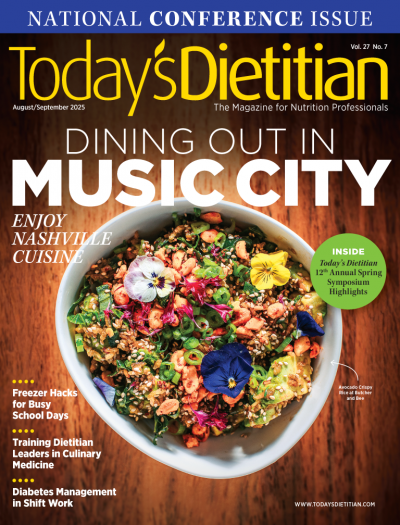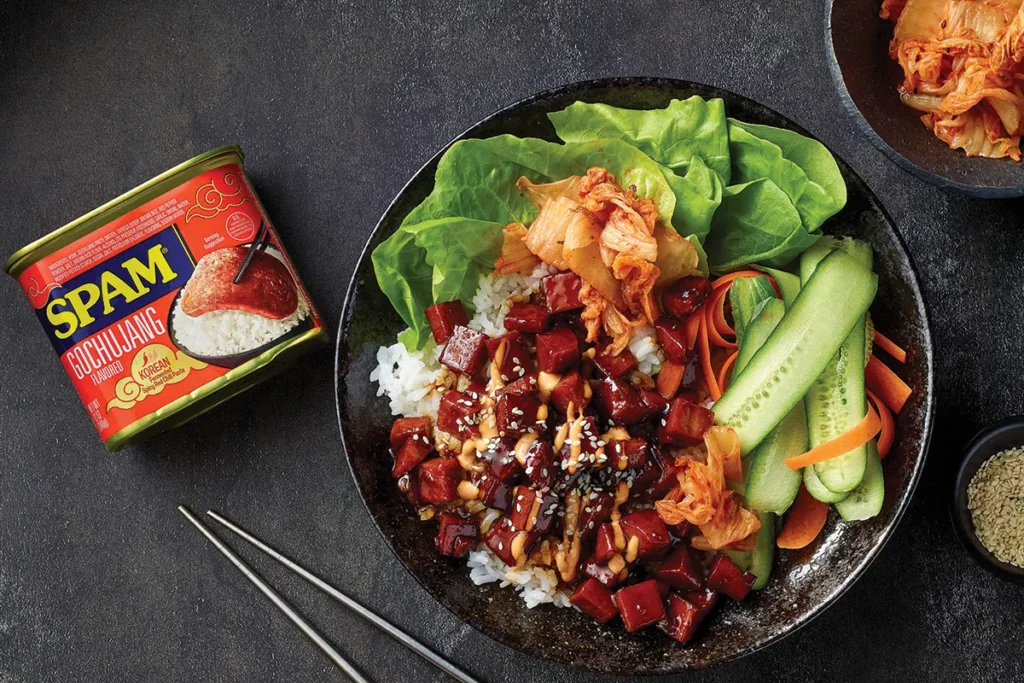Today’s Dietitian
Vol. 27 No. 3 P. 44
In our ever-connected world, people increasingly want to travel through food, and it shouldn’t be any surprise to see global cuisines shaping the culinary landscape. The National Restaurant Association1 predicts Southeast Asian foods will be in the spotlight—specifically Korean, Vietnamese, and Filipino cuisines.
The global spread of K-pop music and K-beauty, along with the popularity of Asian films and television, have helped spark interest in Asian cultures and, by extension, their culinary traditions, says Suzy Badaracco, president of Culinary Tides, Inc, a food trends consultancy.
“Chefs worldwide are incorporating Asian ingredients and techniques into their creations, leading to fusion dishes that blend Asian flavors with other cultures,” she says.
This new Asian fusion, which is often a mash-up with Mexican and Italian cuisines, includes birria ramen, Vietnamese pizza, Korean bulgogi tacos, sushi burritos, ramen carbonara, and pizza dumplings.
In addition, Asian condiments—from Japanese mayo to umami-rich katsu sauces—are being integrated into popular American dishes, such as burgers and tacos, or used as dipping sauces for fries and finger foods.
“These fusion foods are becoming mainstream as consumers enjoy the comfort of familiar flavors paired with unexpected Asian elements, reinforcing the appeal of innovative, cross-cultural creations,” Badaracco says.
With the popularity of Korean BBQ and kimchi, new less-familiar Korean offerings are trending, including tteokbokki spicy rice cakes, kimbap (seaweed rice rolls), buldak (spicy barbecued chicken, bibimbap rice bowls), and bingsoo, a milk-based shaved ice dessert with sweet toppings.
The National Restaurant Association identified other top trending Asian dishes, including the following:
• Vietnamese: Pho (soup with broth, rice noodles, meat, and vegetables), bahn mi sandwiches, and Quang noodles.
• Filipino: Tocino-style pork, chicken adobo, lumpia (fried spring roll), and pancit (a noodle dish).
Filipino dishes are especially popular with Gen Z, according to Tastewise, a firm that uses artificial intelligence to track food trends. Tastewise data from restaurant menus, social media content, and shopping patterns reveals that interest in Filipino food has risen 50% in the past year.
Trending Filipino dishes include karekare, a traditional Filipino stew with a thick savory peanut sauce, and sinigang, a sour soup made with tamarind and calamansi, a Filipino citrus fruit.
Gen Z is especially enamored with boba or bubble tea, which began as a street food in Taiwan by blending tea, milk, and sugar with tapioca balls for texture. Now, Gen Z is turning their attention to ube lattes, made with the Filipino purple yam, pandan iced coffee, coffee jelly sago, and coconut milk with pandan foam. Pandan is a spiky tropical plant that is frequently used in sweet and savory dishes in Southeast Asia.
Browsing the frozen food aisle, you’ll find an array of items to easily create meals and snacks inspired by Asian street food, including dumplings and bao buns.
Asian-inspired desserts featuring flavors like matcha, black sesame, and ube are also becoming more prevalent—appealing to those seeking unique and less sweet options, Badaracco says.
Some of the trending Asian condiments going mainstream include the following:
• Chili Crisp: A spicy and crunchy condiment with chili flakes, fried garlic, shallots, and oil that is a trending flavor for noodles, frozen dinners, tinned fish, snacks, butter, and even desserts.
• Gochujang: A Korean fermented red chili pasta that is trending on restaurant menus and is being used in a variety of new products, from Spam gochujang to gochujang potato chips.
• Doenjang: A thick, brown fermented soybean paste with a robust umami flavor that’s a staple in Korean cooking.
• Ssamjang: A spicy-sweet Korean sauce made by combining gochujang and doenjang with sesame oil and a sweetener; it’s a popular dipping sauce for Korean barbecue with lettuce wraps.
• Nam Prik Pao: A Thai chili paste that combines sweet, spicy, and savory flavors.
• Nuoc Cham: A Vietnamese dipping sauce made with fish sauce and citrus, which is being adapted as a salad dressing, marinade, and pasta sauce.
• Furikake: A Japanese seasoning blend with seaweed (nori) and sesame seeds that has become a popular sprinkling on popcorn, fries, and avocado toast.
• Miso: A traditional Japanese condiment made by fermenting soybeans that is being used in a range of new products—from salad dressings and sauces to miso-infused butter and chocolate.
• Salted Egg Yolk: Cured egg yolks that originated in Chinese cuisine (used in mooncakes) and now flavoring chips, crispy salmon skin, popcorn, cocktails, and ice cream.
If you’ve scrolled on TikTok, you might have seen some of the viral Asian trends, including hwachae, a colorful Korean fruit punch, and onigiri art, Japanese rice balls transformed into animals, pop culture characters, or geometric shapes.
Other Asian food trends on TikTok include chili oil eggs, boba-inspired creations, and rice paper hacks, such as turning rice paper into gluten-free chips, noodles, dumplings, pizza, croissants, and dessert wraps.
Many Asian dishes are colorful, textured, and aesthetically pleasing—making them ideal for short-form content like TikTok videos.
With the global reach of social media platforms like TikTok and the growing expansion of Asian grocery stores like H Mart in urban areas and suburbs, Asian-inspired food trends will continue to gain momentum—influencing new product development and restaurant menus in 2025 and beyond.
— Janet Helm, MS, RDN, is a global food trends analyst and founder of Food at the Helm (FoodattheHelm.com), a food-centric marketing communications consultancy. With more than 25 years of agency experience in public relations, Helm has extensive experience working with food brands and agricultural commodity boards.
Reference
1. 2025 what’s hot culinary forecast. National Restaurant Association website. https://restaurant.org/research-and-media/research/research-reports/whats-hot-food-beverage-trends. Published November 12, 2024.



